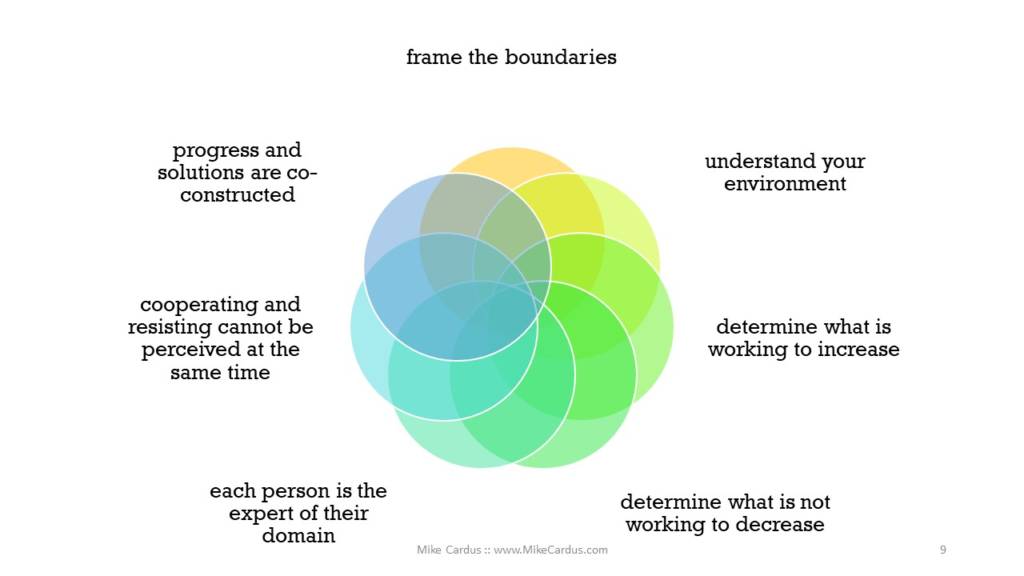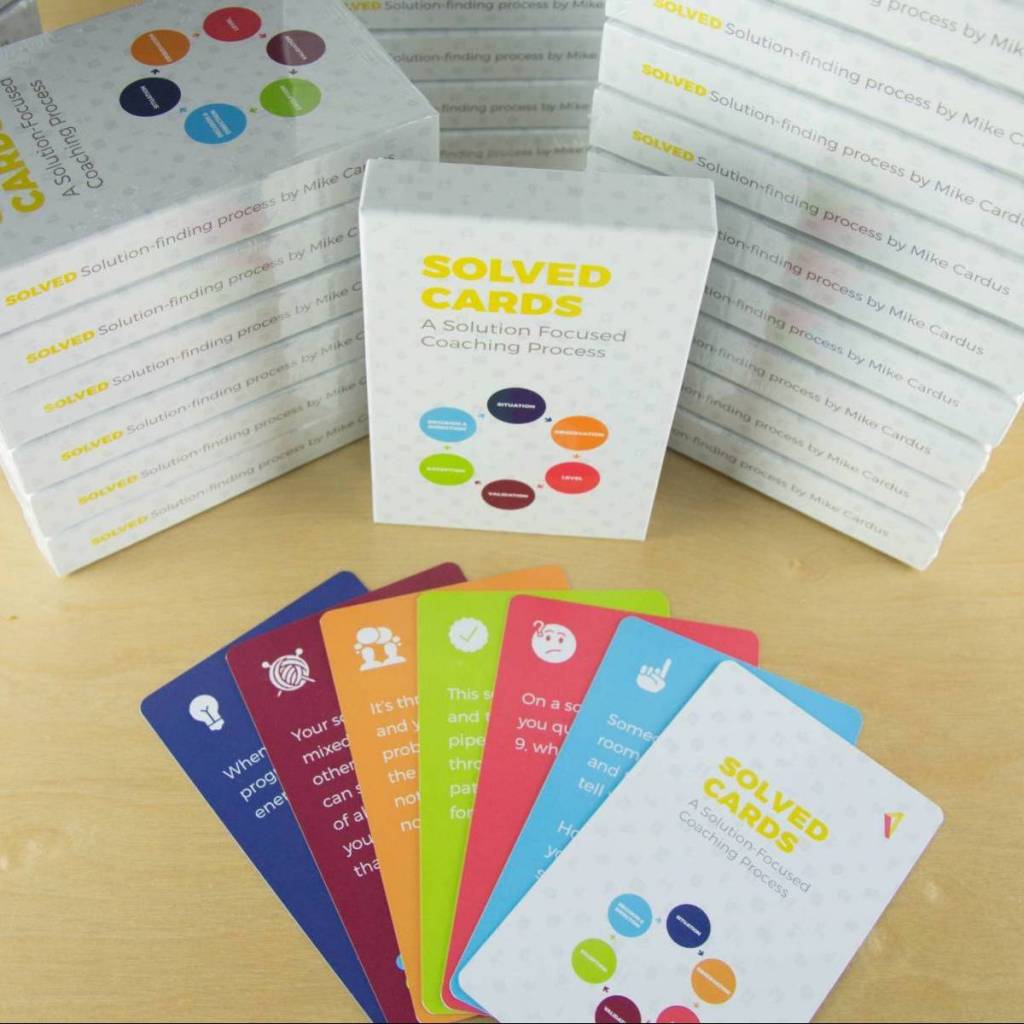“… changing is a continual process and stability is an illusion or a memory of one moment during the process of changing.”
-Steve de Shazer ‘The Death of Resistance’
Change and the metaphors you use will impact how you see and navigate change.
For example:
- change as grief or death – will set you up to focus on change as a loss, and that will reinforce that change is something to be feared or fret over.
- change as war – you will see others as enemies or allies. Those that are ‘with you’ as allies, and those against you as ‘enemies.’ Reinforcing that change has winners and losers, and we must fight and defeat enemies to succeed.
- change is abnormal – when you notice a change, you will treat and react to change as cancer or some abnormality — which may move you to ‘get back to normal,’ and as you cannot achieve normalcy, you try harder to cease the abnormality.
Are all metaphors bad?
I don’t think so, and they are helpful to use as sense-making concepts when you are experiencing discomfort or something unknown.
What metaphors can be useful to see change consistently and helpfully? This is what draws me to solution-focused concepts. When we consider change as a constant, like a river flowing with continuous motion and relative stability, the image of change changes.
With flow (change) constant, memories of stability are a slice of the past, like a photo, from a moment during change. You can look at your collection of photos (memories) and see what you found useful about them, how you persevered or found joy in those moments, and build into how you will recognize joy and beneficial change now into the future.
This solution-focused concept of change and complex-adaptive-systems inspired the solution-focused framework of change.
Solution-Focused Framework for Change

I’ve written before about the areas in the solution-focused framework for change. Here I’ll explore questions and considerations within each region. While this is not a linear, step-by-step recipe, each area does feed into the next. It may be most helpful to start with framing the boundaries.
frame the boundaries
- What can we change?
- What can we not change? What areas are untouchable and non-negotiable?
- Knowing current capacity and need, what will point to the edges of this change?
understand your environment
- Looking at the current implementation, strategy, people, cash – do we know enough? What more can we understand?
- Who else is doing similar things, what do we know about them, do we know enough?
- Who has knowledge that can be helpful?
- Who else ought we include?
- What voices are we leaving out accidentally?
- What voices are we leaving out intentionally?
determine what is working to increase
- Looking at the current environment and what we can change, how can we monitor or notice the changes?
- What is already going well that shows us an opportunity?
- Where and who are involved in areas that are working well that we ought to talk with?
- From what is going well, how can we use those ideas to make similar changes in other areas?
what is not working to decrease
- Looking at the current environment, and boundaries what is not going well, and we ought to consider doing something different?
- What is not going well enough, and we ought to abandon and stop?
- Where and who are involved with areas that are not going so well and we ought to talk with?
- From what is not going well, what have we learned, and can we use those ideas to continue learning in the future?
each person is the expert of their domain
- How will we listen to multiple voices to best understand and co-construct our future and change?
- How will we ensure that those who have in-depth knowledge and expertise have their voice(s) heard and are part of the solutions?
- Who can strengthen the informal networks and connections?
- What resources or nutrients will we offer to support people’s domain expertise while strengthening the networks?
cooperating and resisting cannot be perceived at the same time
- What does cooperating look like? How will we recognize cooperating?
- When we feel resisting, what can we do instead?
- What does resisting a lousy idea look like?
- When meeting and working, what will cooperating look like? How will others notice?
progress and solutions are co-constructed
- What process will we use to develop unique or innovative change?
- How can we develop a way for people to disagree and share their concerns?
- How can we increase our domain expertise with many voices to construct a solution that makes sense?
The solution-focused framework for change requires inquiry and the use of change as a continuous flow process. Looking at the environment, inviting multiple domain expertise, seeing what is and is not working, while constructing useful change –> happens when we acknowledge change as a constant and our moment as a memory of time and not a stable-static reality.

SOLVED CARDS
Make change happen with a problem-solving approach that’s focused on solutions.

